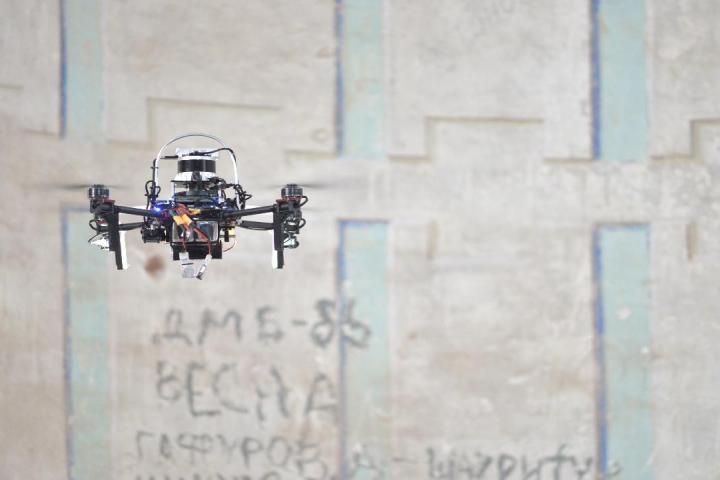
"The drones are completely autonomous, they only use on-board sensors," Martin Saska, head of the group, told the Czech press agency. "The main sensor they use is 3D LIDAR. It scans the environment and based on that scan (the drone) can determine its position in the church. This gives us a GPS replacement. The moment we have an exact position in the environment, planning the flight of the drone is not so difficult," Saska described. Not only the technician, but also the conservationist, he said, can tell exactly where to fly the drone and at which point to take a photo. "Based on the visuals of the 3D model that we provide them," the scientist pointed out.
"It directly clicks on the individual locations that the drone visits, photographs them and returns a preview of the photos and then the best possible resolution photos on disk. Those are studied, and if okay, they go on to the next part of the church or task," Saska added on the workflow. However, if the expert is not satisfied with the materials, the exact same autonomous flight can be repeated - for example, just with a different camera setting.
Saska said the technology the group used began developing about eight years ago. The drone was first flown six years ago in the Church of St. Nicholas on Prague's Old Town Square. Among other monuments, experts have used it in the Church of St. Moritz in Olomouc, the funeral chapel of All Saints at the castle in Telč, in the Assembly Hall of the Archbishop's Castle in Kroměříž or to map the Plumlov Castle. Saska then pointed out that the drone has also been deployed in former industrial projects.
However, the researcher said that before using this technology, careful consideration must be given to whether the benefits provided by the drone outweigh the relatively high costs. The cost of the components alone is in the lower hundreds of thousands, according to Sask. "Of course you have to add the time of the technician who assembles it, there are some hundreds of hours of work. It's all small-scale manufacturing. So you can't get that cheapening when it comes off the production line," the scientist stressed. Saska pointed out that software is also expensive. "We're not talking about a solution that has tens of thousands of users, that development effort is spread over several participants. So, even if some company takes it up, it will not be a completely cheap service," the expert concluded.
The group continues to improve the drone, today its flight was also presented in the gymnasium of the Faculty of Electrical Engineering of CTU on Charles Square. CTU cooperates with the Olomouc office of the National Heritage Institute on the Dronument project.